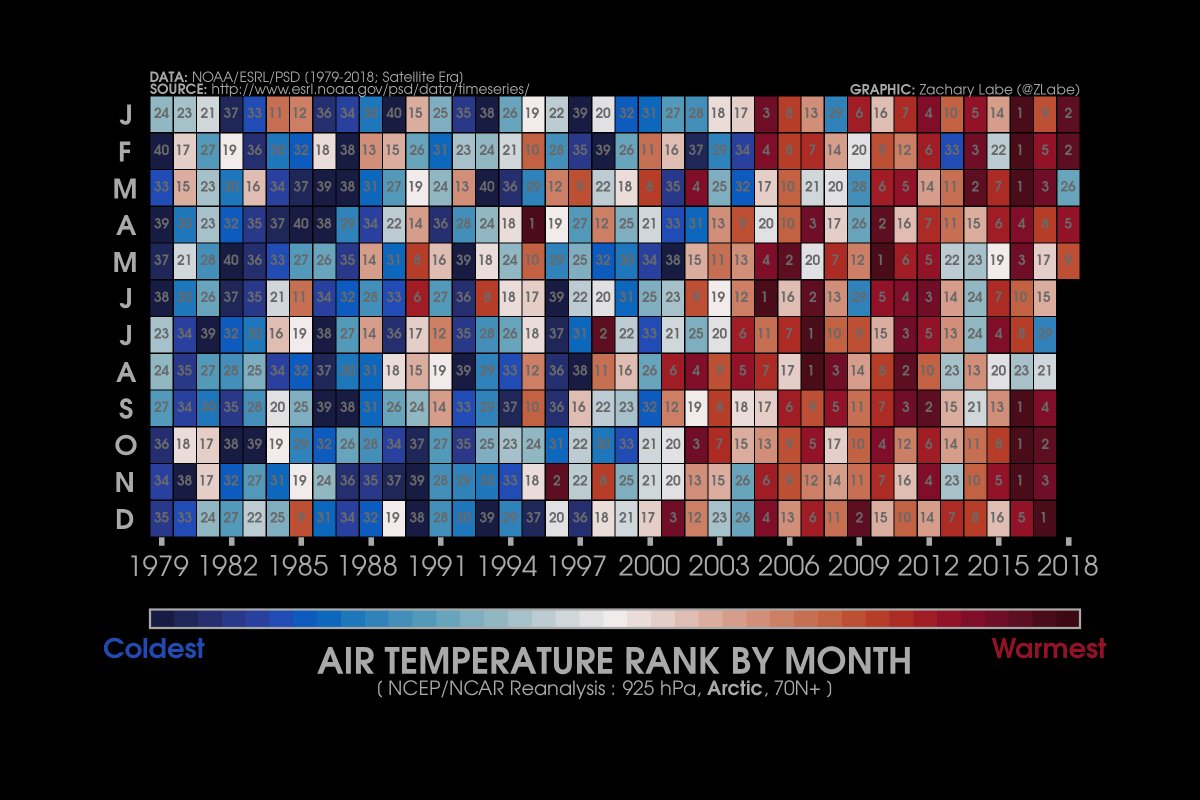There's Way Too Little Ice Around Svalbard Right Now
4
June, 2018
If
you came here looking for good Arctic sea ice news, I have some.
Kidding, there’s no
such thing as good Arctic sea ice news these
days.
When
we last checked in with ice in the north, the picture was, uh, not
good! The Bering Sea had lost
all of its ice roughly
a month ahead of schedule. Now there’s a meltdown taking place on
the other side of the Arctic.
Ice
around Svalbard, a Norwegian island that sits between the Greenland
Sea to the west and Barents Sea to the east, has receded rapidly over
the past few weeks. Zack Labe, a PhD candidate at University of
California, Irvine, told Earther the current ice coverage “is even
less the average September minimum.”
Arctic
sea ice hit its second-lowest
maximum on record this
year after four years in a row of record lows. That left it in an
already weakened state for the melt season, which usually sees
icepack bottom out in September. But this melt season is already in
exceptional territory around Svalbard with four more months to go.
Labe
said he suspected an early May intrusion of warm air could have
preconditioned the ice to melt. In the weeks that followed,
persistent warmth in the atmosphere—the island just had its warmest
May on record—and
the ocean coupled with storms could’ve further put the pinch on
ice.
Wow, remarkable retreat of sea ice around Svalbard this spring... [Chart available from
This
is both a freak meltdown and one that’s becoming far more common in
this and other parts of the Arctic. Rising temperatures due to
climate change have set off a feedback loop of more ice melt that in
turn means more open water. That
water absorbs more heat than the ice, which in turn drives more
melting. The seas that ring the Arctic have all seen varying degrees
of sea ice loss as a result of this human-driven catastrophe, but the
Barents Sea has really suffered.
“It’s
also an area where we actually have good observations, which have
been consistently signaling dramatic changes in climate,” Labe
said.
Rising
air temperatures have helped kill the Barents Sea’s ice cover, but
its waters are also changing dramatically. The sea sits on the
margins of the Arctic and gets influenced by both the frigid waters
to its north in the Arctic Ocean and the more temperate (relatively
speaking) waters of the North Atlantic. The balance between these
competing oceans appears to be shifting due to climate change.
“The
primary reason for the large loss of sea ice in the Barents Sea,
including north and west of Svalbard, in the last few decades is the
overall warming trend of the Atlantic water flowing into the region,”
Arild Sundfjord, a senior scientist at the Norwegian Polar Institute,
told Earther.
A
study published last
year in Science chronicled
this shift in the Barents Sea and pointed east, showing that the cold
Arctic water had previously acted as a cap over warmer Atlantic
waters. The helped insulate sea ice from melting from below. As
climate change has warmed that surface layer, the cap has weakened
and more Atlantic water has streamed into the region, a process those
researchers dubbed “atlantification.”
The
Atlantic, as you may have heard, doesn’t really do sea ice. And it
seems in the coming decades, the Arctic might
not either during the summer.





No comments:
Post a Comment
Note: only a member of this blog may post a comment.